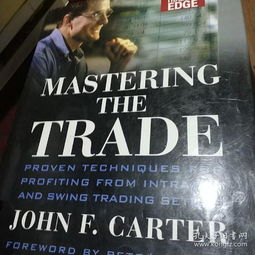本文目录导读:
Content:
Fishing is an ancient pastime that has been cherished by people around the world for centuries. Whether you're a seasoned angler or a beginner looking to improve your skills, there's always room for growth and enjoyment on the water. The thrill of reeling in a high-scoring fish can be exhilarating, and with the right techniques, you can increase your chances of hooking into the big ones. In this article, we'll explore some essential tips and tricks to help you maximize your fun and score those high-value fish.
Understanding Your Target Fish
Before you can start fishing for high-scoring fish, it's crucial to understand the species you're targeting. Different fish species have different behaviors, habitats, and feeding patterns. Here's a breakdown of some popular fish and their key characteristics:
Largemouth Bass
Largemouth bass are among the most sought-after fish in freshwater. They are known for their striking appearance and voracious appetites. To catch them, you'll need to:
- Identify Their Habitat: Bass often hang out around structures like logs, rocks, and docks. Use a topwater lure to mimic a struggling baitfish or a spinnerbait to attract their attention.
- Timing is Key: Bass are most active during the early morning and evening. Fish during these periods to increase your chances of success.
- Use the Right Bait: Soft plastics like worms and grubs, along with spinnerbaits and crankbaits, are effective for bass fishing.
Salmon
Salmon are a prized catch for many anglers, and they can be quite challenging to fish for. Here are some tips:
- Know Their Migration Patterns: Salmon migrate to specific spawning grounds, so it's important to fish in areas where they are known to pass through.
- Choose the Right Gear: Salmon are strong and can be quite large, so use a heavy-duty rod and reel with a good drag system.
- Use Natural Baits: Salmon are attracted to natural baits like herring, sardines, and other fish eggs. Artificial lures can also be effective, especially during the spawning season.
Trout
Trout are known for their elegance and are a favorite among fly fishing enthusiasts. Here's how to catch them:

- Understand Their Water Flow: Trout are often found in slow-moving or still water. Use a fly rod with a light line to present your fly delicately.
- Use Live Bait: Worms, maggots, and small fish are all effective live baits for trout.
- Timing is Important: Early morning and late evening are the best times to fish for trout, as they are more active during these periods.
Mastering the Techniques
Once you've identified your target fish, it's time to hone your fishing techniques:
Casting
A good cast is the foundation of successful fishing. Practice your casting technique until you can cast accurately and cover more water. Here are some tips:
- Maintain a Good Grip: Hold the rod with a comfortable grip, but keep it firm to ensure control.
- Focus on the Target: Aim at your target and visualize the path of the lure or bait.
- Timing is Everything: Release the line at the right moment to achieve the desired cast distance and accuracy.
Bait Presentation
The way you present your bait can make or break your fishing trip. Here's how to do it right:
- Match the Bait to the Fish: Use bait that closely resembles the fish's natural prey.
- Be Patient: Let your bait sink to the desired depth before starting to retrieve it.
- Vary Your Retrieval Speed: Slow and steady can be effective, but sometimes a faster retrieve can trigger a strike.
Reading the Water
Understanding the water you're fishing can give you a significant advantage. Look for:
- Structure: Logs, rocks, and other submerged objects can be prime spots for fish.
- Vegetation: Weeds and grass can provide cover for fish and attract them with shade.
- Water Flow: Fish often hold in areas with slow water flow, so look for calmer spots.
Gear and Equipment
The right gear can make a big difference in your fishing success. Here are some essential items to consider:
- Rod and Reel: Choose a rod and reel that match the species you're targeting and the type of fishing you'll be doing.
- Lures and Baits: Have a variety of lures and baits on hand to cover different fishing situations.
- Tackle Box: Stock up on hooks, sinkers, swivels, and other essential tackle.
- Safety Gear: Always carry a first aid kit, a whistle, and a floatation device when fishing from a boat.
Final Thoughts
Fishing for high-scoring fish can be both a rewarding and challenging endeavor. By understanding your target species, mastering the necessary techniques, and having the right gear, you'll be well on your way to enjoying a successful fishing trip. Remember that patience and persistence are key, and with time, you'll develop a keen sense for what it takes to catch those high-value fish. Happy fishing!












